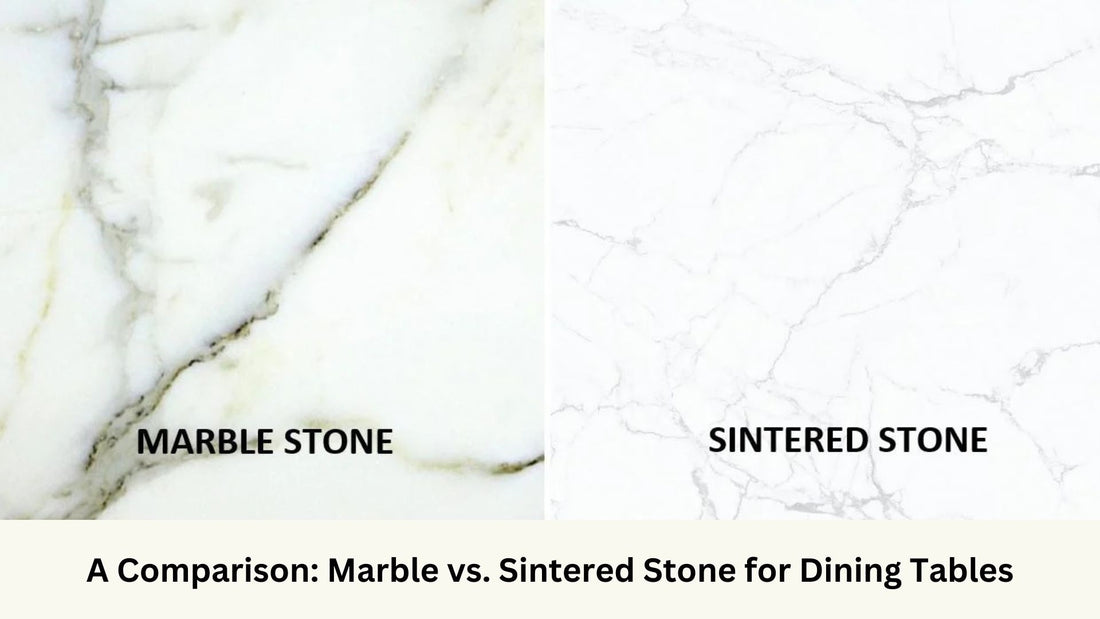
A Comparison: Marble vs. Sintered Stone for Dining Tables
Share
When it comes to choosing the perfect material for your dining table, the decision can be overwhelming. Two popular options on the market are marble and sintered stone. Let's take a closer look at the differences between these two materials to help you make an informed decision.
What is Marble?
Marble is a natural stone that has been used for centuries in various architectural and design applications. It is known for its unique veining and luxurious appearance. Marble is a timeless choice that adds elegance and sophistication to any space.
What is Sintered Stone?
Sintered stone is a man-made material that is created by compacting and fusing minerals together at high temperatures. This process results in a durable and versatile material that is resistant to scratches, stains, and heat. Sintered stone is available in a wide range of colors and finishes, making it a popular choice for modern interiors.
Key Differences
One of the main differences between marble and sintered stone is their composition. Marble is a natural material, while sintered stone is engineered. This means that marble may have natural variations and imperfections, whereas sintered stone is more consistent in appearance.
Another key difference is maintenance. Marble is a porous material that requires regular sealing to prevent staining. Sintered stone, on the other hand, is non-porous and easy to clean with just soap and water.
Which is Right for You?
If you value the natural beauty and uniqueness of marble, and don't mind the maintenance involved, then marble may be the right choice for you. However, if you prefer a low-maintenance, durable material with a modern aesthetic, sintered stone could be the perfect option for your dining table.
Ultimately, the decision between marble and sintered stone comes down to personal preference and lifestyle. Consider your priorities in terms of aesthetics, maintenance, and durability to choose the material that best suits your needs.
Published: 27th Jun 2024
